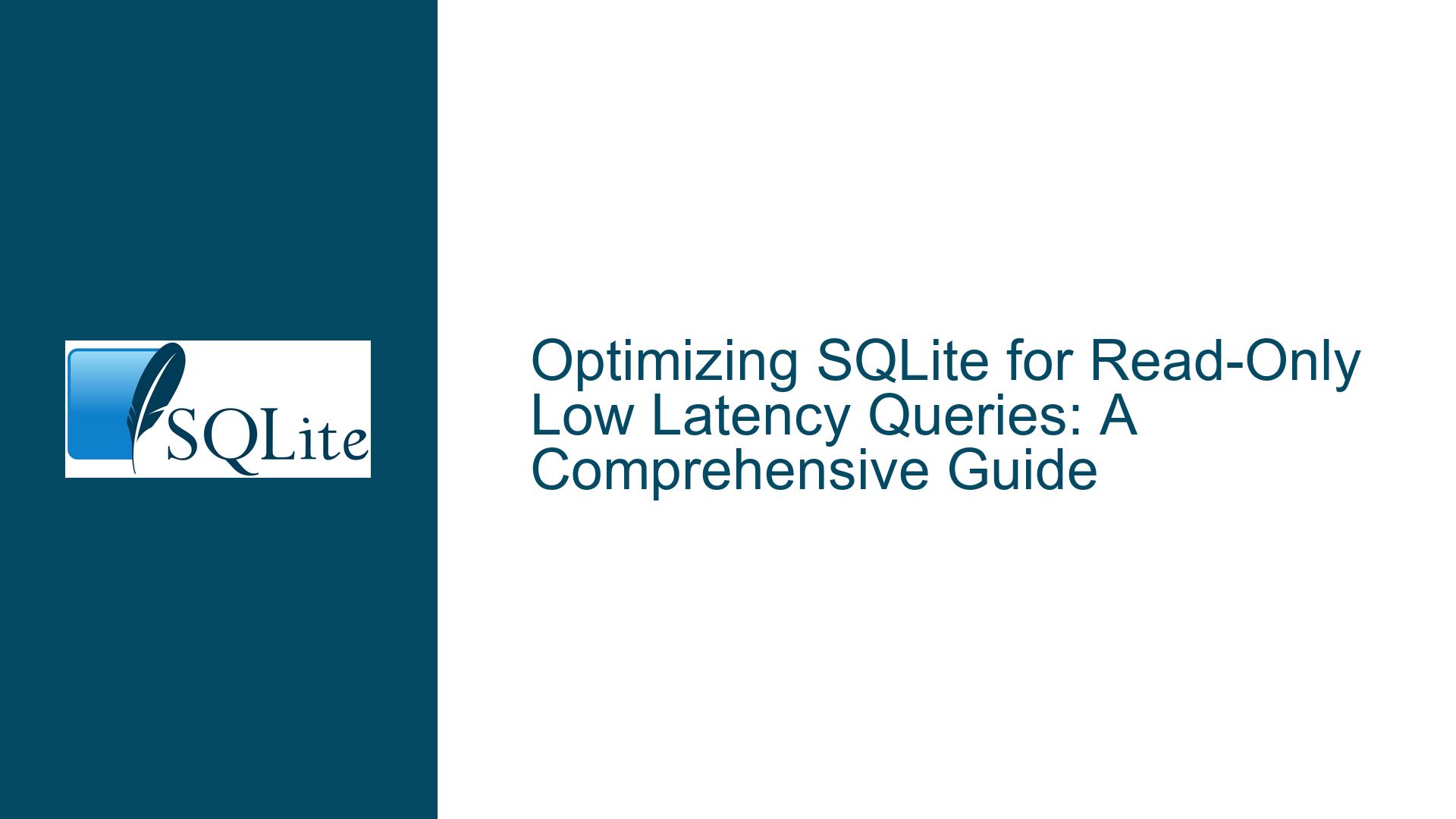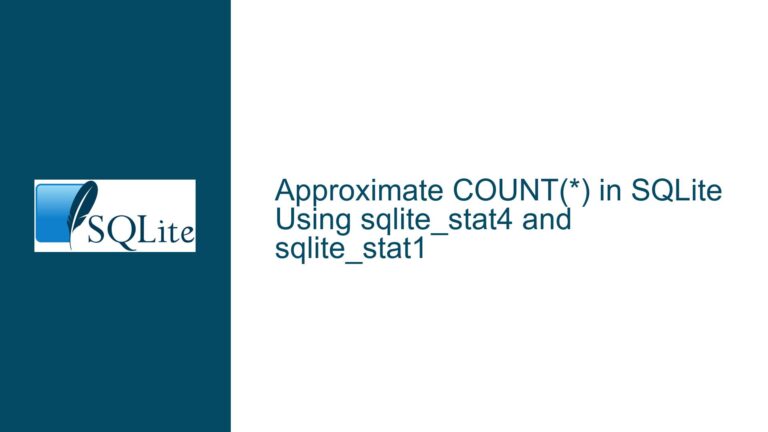Optimizing SQLite for Read-Only Low Latency Queries: A Comprehensive Guide
Understanding the Need for Low Latency in Read-Only SQLite Databases
In scenarios where an SQLite database is used in a read-only capacity, the primary focus often shifts to optimizing query performance to achieve the lowest possible latency. This is particularly critical in applications where response time is a key performance indicator, such as real-time data processing, high-frequency trading, or interactive web applications. The goal is to minimize the time taken to execute queries, ensuring that the system can handle a high volume of requests with minimal delay.
The discussion revolves around a specific use case where the database is loaded into memory to reduce disk I/O overhead, and a single complex query involving multiple table joins is executed repeatedly. The current setup achieves query times ranging from 10 to 40 microseconds, but there is a desire to push this performance even further. The challenges include the initial compilation time of prepared statements, the potential for further query optimization, and the consideration of schema restructuring to improve performance.
Exploring the Impact of Prepared Statement Compilation and Schema Design
One of the key issues highlighted is the time taken to compile prepared statements, which can range from 1 to 2 milliseconds. This compilation time is incurred as a one-time penalty per thread, but in a high-concurrency environment, this can add up and impact overall system performance. The discussion suggests that reusing prepared statements across threads could mitigate this issue, but this approach requires careful management of connection and statement pools to avoid thread-safety issues.
Another area of focus is the schema design. The current schema involves seven tables joined together in a single query. While this normalization is generally good practice for maintaining data integrity and reducing redundancy, it can introduce performance overhead, especially in read-heavy scenarios. The suggestion to denormalize the schema into a single table is a radical approach that could potentially reduce query complexity and improve performance. However, this comes with significant trade-offs, including increased storage requirements, potential data inconsistency, and added complexity in data maintenance.
Practical Steps to Optimize SQLite for Low Latency Queries
To address these challenges, several practical steps can be taken. First, ensuring that the database is properly analyzed using the ANALYZE command can help SQLite make better decisions about query execution plans. This involves collecting statistics about the distribution of data in the database, which can be used to optimize indexes and query plans.
Next, the use of covering indexes can significantly improve query performance. A covering index includes all the columns needed by a query, allowing SQLite to retrieve the required data directly from the index without accessing the underlying table. This can reduce the number of disk accesses and improve query speed.
Finally, the discussion touches on the potential benefits of restructuring the database into a more denormalized form. While this approach can reduce query complexity and improve performance, it requires careful consideration of the trade-offs involved. In some cases, creating a new database with precomputed views or lookup tables might be a more practical solution, especially if the data is immutable and the query patterns are well-defined.
By following these steps and carefully considering the trade-offs involved, it is possible to optimize an SQLite database for low latency read-only queries, achieving performance that meets the demands of even the most latency-sensitive applications.
Issue Overview
The core issue revolves around optimizing an SQLite database for low-latency read-only queries. The database is loaded into memory to minimize disk I/O, and a single complex query involving multiple table joins is executed repeatedly. The current setup achieves query times between 10 and 40 microseconds, but there is a desire to reduce this further. The challenges include the initial compilation time of prepared statements, the potential for further query optimization, and the consideration of schema restructuring to improve performance.
Possible Causes
Several factors could be contributing to the current performance limitations. The compilation time of prepared statements, which ranges from 1 to 2 milliseconds, is a significant bottleneck, especially in a high-concurrency environment. The schema design, which involves seven tables joined together in a single query, introduces complexity that can impact query performance. Additionally, the current indexing strategy may not be fully optimized, leading to suboptimal query execution plans.
Troubleshooting Steps, Solutions & Fixes
To address these issues, several steps can be taken. First, the database should be analyzed using the ANALYZE command to collect statistics about the distribution of data. This information can be used to optimize indexes and query plans. Next, covering indexes should be created to include all the columns needed by the query, allowing SQLite to retrieve the required data directly from the index without accessing the underlying table. Finally, the schema should be carefully evaluated to determine if denormalization or restructuring into a single table would provide significant performance benefits. In some cases, creating a new database with precomputed views or lookup tables might be a more practical solution, especially if the data is immutable and the query patterns are well-defined.
By following these steps and carefully considering the trade-offs involved, it is possible to optimize an SQLite database for low-latency read-only queries, achieving performance that meets the demands of even the most latency-sensitive applications.






